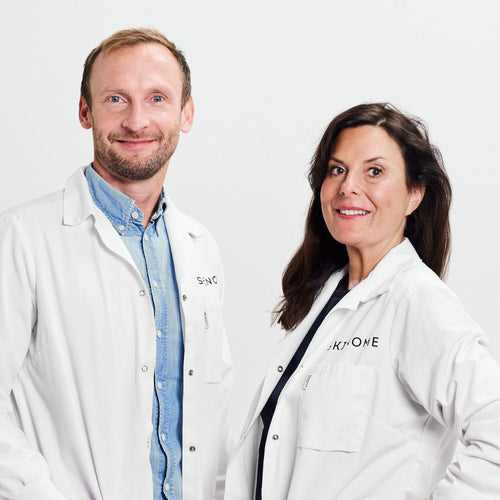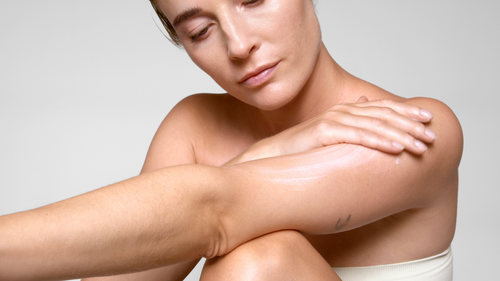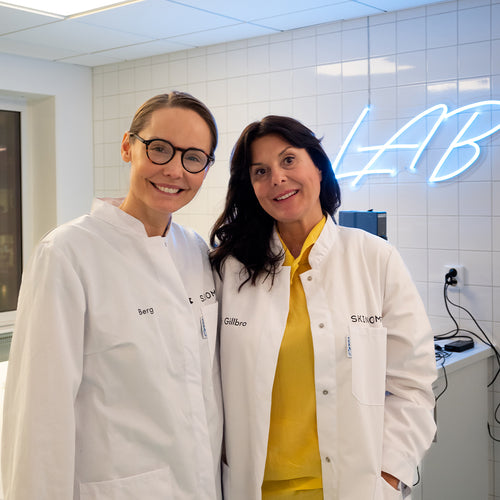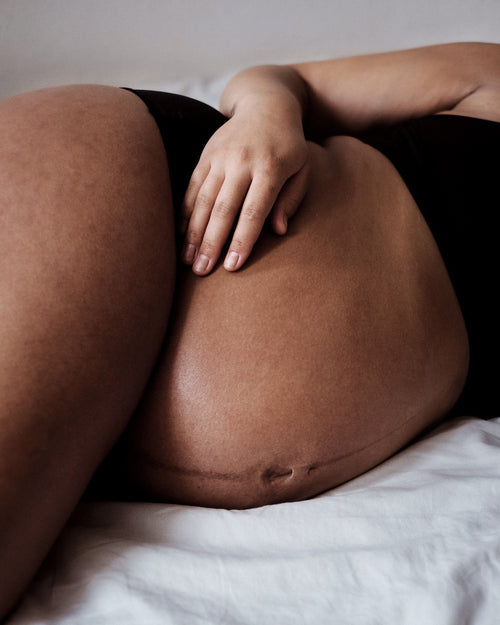Premenstruellt syndrom beror på en kombination av hormonella förändringar, kemiska förändringar i hjärnan, livsstilsfaktorer, genetik och eventuellt inflammation. Hormonfluktuationer, speciellt i östrogen och progesteron efter ägglossningen, tros vara en primär drivkraft bakom PMS-symtomen. Dessa hormonella förändringar kan påverka serotonin, en neurotransmittor som reglerar humör, vilket leder till de emotionella symtomen av PMS. Dessutom kan genetiska faktorer och livsstilsval som kost och stressnivåer påverka svårighetsgraden av PMS.
Hur PMS påverkar huden
Under den premenstruella fasen kan talgkörtlarna påverkas av fluktuationer i hormonnivåer, särskilt androgener, såsom testosteron. Även om androgener typiskt klassificeras som manliga hormoner, finns de också hos kvinnor och spelar en roll i hudhälsan, inklusive regleringen av talgproduktionen.
Under menstruationscykeln, särskilt under lutealfasen fluktuerar hormonnivåerna. Medan nivåerna av östrogen och progesteron stiger och faller, kan de relativa effekterna av androgener bli mer framträdande. Detta kan leda till ökad talgproduktion, vilket bidrar till utbrott av akne eller oljig hud, som vissa kvinnor upplever som en del av sina PMS-symptom.
Vanliga hudproblem under PMS
Akne: Ökad talgproduktion kan leda till akne, särskilt runt käklinjen och på hakan.
Hudutslag: Hormonella förändringar kan framkalla hudutslag eller förvärring om man har en eksembenägenhet.
Ökad känslighet: Huden kan bli mer känslig, vilket gör den mer benägen för irritation.
Rödhet och svullnad: Hormonella svängningar kan orsaka inflammation, vilket kan resultera i rödhet och svullnad.
Hantering av hudproblem under PMS
Skonsam rengöring:
Använd milda rengöringsprodukter. Både Mineral cleanser och Sensitive cleanser fungerar utmärkt som rengöring under PMS.
Fuktgivande:
Öka användningen av fuktighetskräm för att bekämpa torrhet. Om du har aknebenägen hud och lätt får finnar under PMS rekommenderar vi främst våra lättare emulsioner: Light Emulsion och Rich Emulsion
Aknebehandling:
Produkter med zink, retinol och Niacinamide kan hjälpa, liksom att konsultera en dermatolog för svårare fall. Night active control fungerar utmärkt som spot treatment under PMS perioden.
Kost och livsstilsfaktorer kan också påverka svårighetsgraden av PMS och hudrelaaterade problem. Mer om detta kommer i del 2.
















